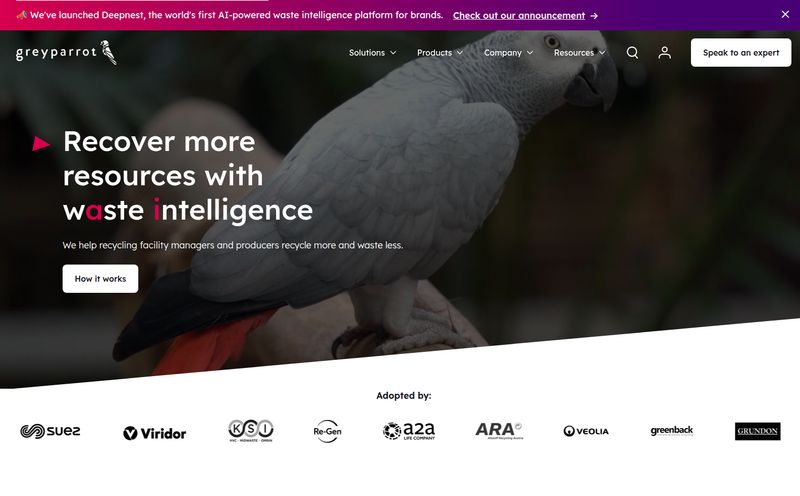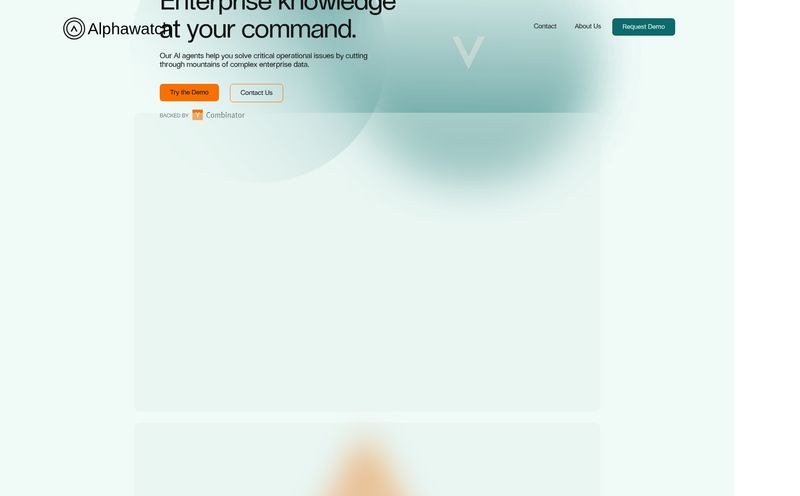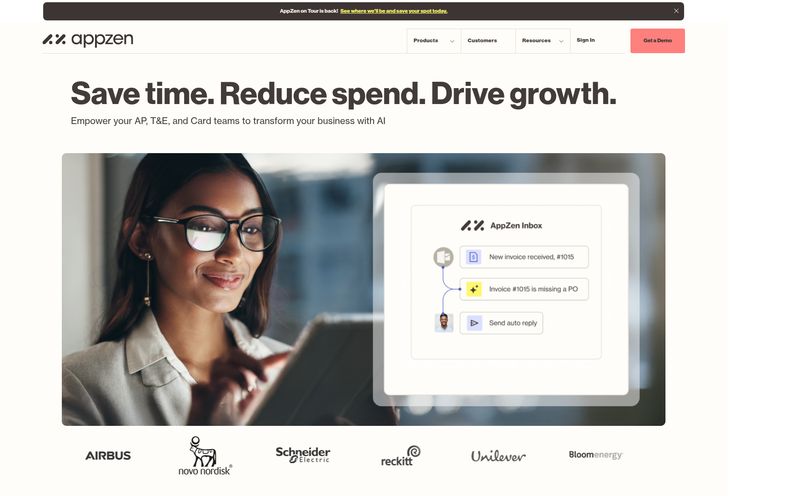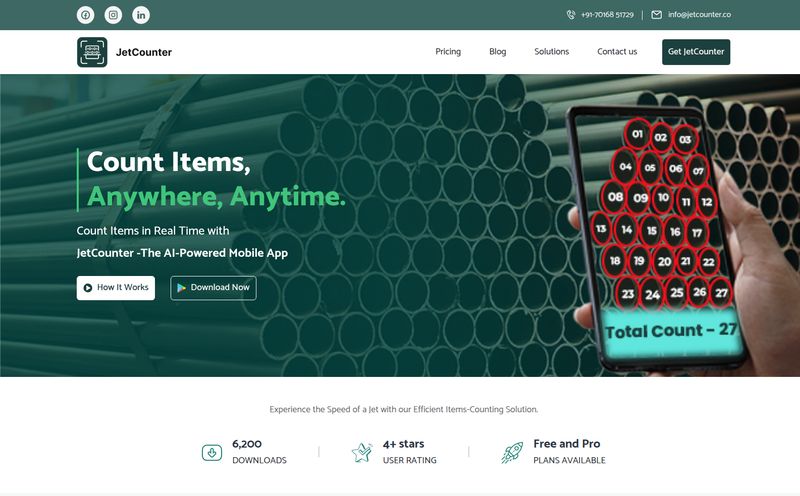As someone who’s been neck-deep in the SEO and traffic world for years, I've seen the front end of countless businesses. But I've also had a peek behind the curtain at the back end—the operations, the finances, the stuff that really keeps the lights on. And you know what I see over and over again? Leaks. Not water leaks, but money leaks. Small, unnoticed drips in expense reports, procurement processes, and vendor payments that, over time, become a flood.
It’s the silent profit killer. The death by a thousand papercuts. We spend so much energy on generating revenue, yet often neglect to properly guard the money we’ve already made. It’s a classic problem. Manually auditing every single transaction is a herculean task, and spot-checking? Well, that's like trying to find a specific needle in a continent-sized haystack. So when I came across a platform like Oversight, which claims to use AI to put a stop to this, my ears perked up. Is it just another piece of enterprise software with a fancy AI sticker, or is it the real deal?
What Exactly Is Oversight? (And Why Should You Care?)
Alright, let's break it down without the corporate jargon. Think of Oversight as a super-smart, always-on financial watchdog for your company. It plugs into your existing financial systems and uses artificial intelligence to continuously monitor all your spend data. We're talking every expense report, every purchase order, every invoice, and every purchase card swipe.
Its whole purpose is to find the weird stuff. The anomalies. The patterns that scream “Hey, look at me! I might be a mistake, a waste of money, or even fraud.” Instead of your audit team manually digging through spreadsheets for weeks, Oversight is doing it 24/7, flagging potential issues in near real-time. It’s about moving from a reactive, “let’s see what we find this quarter” approach to a proactive, “let's stop this problem before it even gets paid” mindset. And in my book, that’s a pretty powerful shift.
Taming the Four-Headed Beast of Corporate Spend
Corporate spending isn’t just one thing; it's a multi-headed hydra. Oversight seems to understand this, breaking down its solution into four key areas that are often the biggest culprits for financial leakage. I’ve personally seen companies struggle with every single one of these.
Getting a Grip on Travel & Expense (T&E) Reports
Oh, T&E. The land of the $100 hamburger and the “oops, I submitted the same receipt twice” mistake. Oversight promises full visibility into these expenses. It’s designed to automatically catch duplicate submissions, out-of-policy spending (like that fancy hotel when a standard one was required), or even weekend purchases on a corporate card that look a bit... suspicious. It’s not about mistrusting your employees; it's about creating a fair and transparent system that protects both the company and the employee from honest mistakes and the occasional bad actor.
Plugging the Leaks in Your Procure-to-Pay (P2P) Process
The P2P cycle is long and complex, which means there are dozens of places for things to go wrong. From duplicate invoices from vendors to paying for services you never received, the potential for leakage is massive. Oversight’s AI digs into this entire workflow to ensure integrity. It verifies that purchase orders match invoices and that you aren't paying the same bill twice. It's the kind of meticulous cross-checking that a human could do, but an AI can do it faster, at a massive scale, and without getting bored or needing a coffee break.
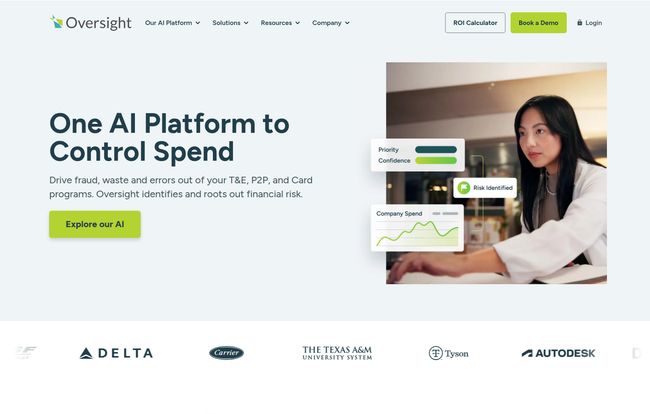
Visit Oversight
De-Risking Your Purchase Card Program
Handing out purchase cards (P-Cards) can be incredibly efficient, but it also opens up a whole new world of risk. How do you ensure they’re being used correctly? Oversight applies its monitoring here too, looking for restricted purchases, spending with unapproved vendors, or even card sharing. This helps enforce policy and significantly reduces the risk of misuse before it becomes a major write-off.
The Headache of Vendor Statement Reconciliation... Solved?
Anyone in accounts payable just shivered reading that heading. Manually reconciling vendor statements to find discrepancies in credits and debits is one of the most tedious tasks on the planet. Oversight offers an automated solution for this, matching everything up and flagging the differences. This not only saves an incredible amount of time but also helps you recover credits you might have otherwise missed. That’s found money, plain and simple.
The Real-World Impact: More Than Just Fancy AI
So, the features sound great. But what's the actual benefit? I’ve always felt that tech is useless unless it solves a real problem or delivers a tangible result. Based on what Oversight presents, the impact is pretty clear. You’re looking at dramatically improved risk management because you’re catching issues proactively. You get a massive boost in efficiency because you’re automating tasks that used to take entire teams weeks to complete. The most obvious win is the direct cost savings—every piece of fraud, waste, or duplicate payment you prevent is money that stays in your bank account. A case study on their site with Southwest Airlines mentioned identifying over $9.1 million in issues. That's... not pocket change.
Beyond that, it provides a level of visibility into spending patterns that most CFOs can only dream of. You can finally see how your money is being spent, where the bottlenecks are, and where the biggest risks lie. This all rolls up into what the industry calls better 'financial governance,' which is a fancy way of saying you’re actually in control of your company’s finances.
Let's Be Real: What Are the Potential Downsides?
No tool is perfect, and it’s important to go in with eyes wide open. From what I can gather, there are a few considerations with a platform like Oversight.
First, it’s not a magic wand you just wave. It requires integration with your existing financial systems (ERPs, expense platforms, etc.). This is pretty standard for any serious enterprise tool, but it means there’s an implementation process. It’s not a simple SaaS you sign up for and use in five minutes. Secondly, there’s likely a learning curve. While the goal is automation, your team still needs to learn how to manage the platform, interpret its findings, and handle the exceptions it flags. Finally, with any AI-based anomaly detection, there’s the potential for false positives. The system might flag a transaction that's perfectly legitimate but just looks weird to the algorithm. This means you'll still need a human to make the final call, though the workload is drastically reduced from 'find the needle' to 'is this actually a needle?'
What's the Price Tag on This Financial Peace of Mind?
This is the big question, isn't it? As is common with enterprise-grade platforms, Oversight doesn't list its pricing publicly. I scoured the site, and there’s no pricing page to be found. This usually means one thing: custom pricing. The cost will likely depend on the size of your company, the number of transactions you process, and which modules you need (T&E, P2P, etc.).
My advice? Don’t get hung up on the initial cost. Instead, use the ROI Calculator they feature on their site. This is the smart way to approach it. If a tool can demonstrably save you more money than it costs—as a platform designed to find financial leakage should—then the price becomes a secondary concern. The conversation shifts from “How much does it cost?” to “How much can it save us?”
So, Is Oversight the Right Move for Your Finance Team?
After looking this all over, I think Oversight is aimed squarely at mid-to-large-sized organizations that feel the pain of managing complex, high-volume spend. If you're a small startup with a handful of employees, this is probably overkill. But if you’re a CFO, Controller, or Audit Manager who lies awake at night wondering what’s hidden in your thousands of transactions, this is the kind of solution that should be on your radar.
It's for the company that has graduated from spreadsheets and manual checks and is ready for an intelligent, automated approach to financial control. It’s for the finance leader who wants to stop playing defense and start playing offense—proactively protecting the company’s bottom line.
A Final Thought
In a world where we’re constantly chasing growth, it’s easy to forget that protecting your existing assets is just as important. Tools like Oversight represent a fundamental shift in how businesses can approach financial health. It’s about leveraging technology not just for growth, but for preservation. And in today’s economic climate, that might be one of the smartest investments a company can make.
Frequently Asked Questions About Oversight
- 1. What kind of fraud can Oversight detect?
- It's designed to detect a wide range, including duplicate payments to vendors, ghost employees in T&E, out-of-policy spending, billing scams, and P-Card misuse. It looks for patterns and anomalies that indicate something isn't right.
- 2. Is Oversight difficult to implement?
- Implementation involves integrating with your current financial systems, like your ERP. This is more involved than a simple plug-and-play app and will require some work from your IT and finance teams, but Oversight likely provides support and services for this process.
- 3. Who are the typical users of the Oversight platform?
- The primary users are finance and audit professionals. This includes roles like Accounts Payable Managers, Internal Auditors, Compliance Officers, Controllers, and CFOs who are responsible for financial governance and risk management.
- 4. Does Oversight replace our audit team?
- No, it's designed to augment them. It automates the tedious, time-consuming work of data analysis, freeing up your human experts to focus on investigating the flagged exceptions, strategic analysis, and resolving complex issues. It makes them more efficient, not redundant.
- 5. Can Oversight monitor spend from different sources?
- Yes, that's its core strength. It's built to analyze data from multiple sources in one unified platform, including T&E systems (like Concur), P-Card providers, and Procure-to-Pay systems within your main ERP (like SAP or Oracle).
- 6. How does Oversight's AI work?
- It uses a combination of machine learning algorithms and pre-defined rules to analyze 100% of your spend transactions. It learns your company's normal spending patterns over time, making it better at spotting deviations and potential risks that wouldn't be obvious to a human reviewer.
References and Sources
- Oversight Official Website
- PwC's Global Economic Crime and Fraud Survey (for general context on the prevalence of corporate fraud)
